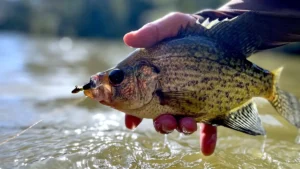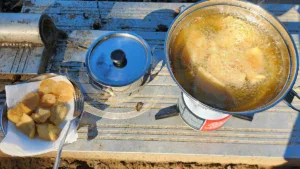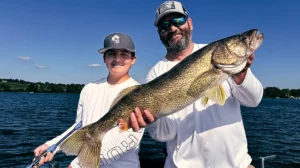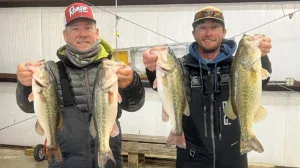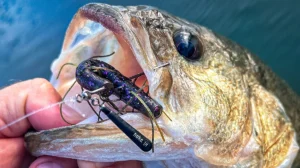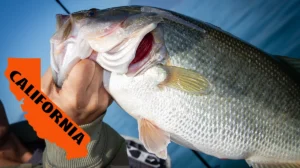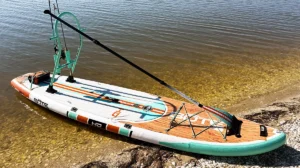Tungsten ice jigs are a hot trend on hard-water. Lure selections from manufacturers are growing, and more anglers are seeing the unique advantages tungsten provides on ice.
Small jigs that “fish heavy” are a main ingredient for many crappie ice fishing tactics. Since tungsten is much denser and approximately 30-percent heavier than lead, it gives new options for jig-size and weight combinations. This has benefits when downsizing, for instance. Tungsten also sinks faster than a similarly sized lead jig, which is an asset in deep water.
Ice-fishing guru and full-time guide, Brian “Bro” Brosdahl of Max, Minn., is well versed in the virtues of tungsten jigs for crappie. Here are 4 reasons tungsten jigs are standard in his ice fishing box:
- Punch slush
- Fast drop
- Aggressive jigging
- Great for downsizing
Punch slush
“Tungsten punches through a slushy hole nicely without needing to go to a gaudy-sized lead jig,” Brosdahl said. “This reason alone is why I use tungsten so often.”
To appreciate this statement, we must take a page from Brosdahl’s stealth fishing handbook. To Bro, slush is your friend. While most anglers scoop it out, he kicks extra slush into a freshly drilled hole. The reason: a slushy hole reduces light penetration for a more natural setting below. In contrast, a clean, slush-free hole allows a spotlight-like beam to shine in water, which can spook clear-water crappie.
The challenge is getting a small bait through the thick, icy soup. For tiny lead jigs, Brosdahl often uses a method he calls jousting. With the jig at the rod tip, he thrusts the rod into the slush to get the tiny jig below the debris before opening the bail and letting the bait sink. He’s never broke a rod, but he’s seen others snap sticks trying the method.
With tungsten, jousting is rarely needed. Average-sized tungsten jigs easily punch through slush. When the slush is extra thick, or when using a tiny tungsten jig, Bro makes a pilot hole in the slush with his Humminbird transducer.
Brosdahl admits he sometimes needs to reach in and pull a big crappie through the slush to land it. But, it’s a small hurdle and a better option than not hooking them at all.
Straight, fast drop
Compared to a lead jig of equal size, a tungsten one is heavier and sinks faster. This has advantages in many crappie scenarios.
- Cover water – Tungsten’s fast drop allows anglers to rapidly fish a hole. This makes prospecting more efficient, especially in deep water. Consider how it’s easier to cover water in a boat using a lure you can cast a country mile versus one with a limited range. On ice, every hole represents a cast. Fast-sinking tungsten makes quick work of covering the water column, bypassing unproductive sections, and determining if fish are around.
- Get back to biters – A high-speed drop lets anglers capitalize on brief, feeding windows. The faster the bait returns to the strike zone, the more crappie one can catch during short-lived bites.
- Straight down – In addition to sinking fast, a round tungsten jig drops straight down. This makes it well suited when a precise drop is needed to avoid snags around timber, vegetation, and rock cribs.
- Making clouds – A heavy tungsten jig is a great tool for banging bottom to attract fish. Make impact with the floor, snap the jig up, and let it smack the silt again. Do this a few times to stir up the bottom and create silt clouds. The sediment plume attracts crappie.
At times, Brosdahl uses a heavy spoon to make massive silt clouds, then reels up and switches to a small jig. Tungsten makes this 1-2 punch fast and efficient.
- Density desirables – A tungsten jig emits ticking sounds when hit on hard bottom.
Brosdahl uses this tactic more for crayfish-eating jumbo perch, but finds banging tungsten can attract crappie when fishing hard-bottom areas or isolated rock piles.
- Accelerated fall – Tungsten sinks well on a spinning outfit. No complaints here. But, these days Brosdahl often uses a straight-line reel, like the Frabill 371, for more speed.
The 371’s ultra-smooth, free spool quickly feeds-out 3-pound fluorocarbon, helping tungsten jigs reach terminal velocity on the drop. The fact straight-line reels eliminate line twist is a bonus when it’s time to finesse a slab to hit.
- Aggressive jigging
Tungsten’s turbo sink-rate isn’t just about bypassing unproductive water to get to active fish. Its fast fall also triggers bites.
“You can really move tungsten around and create heavy jigging strokes,” Brosdahl said. “A slow, natural fall is nice when you’ve got a cold front or are dealing with really finicky fish, but when fish are aggressive a fast fall triggers them. And, you’ve always got the option to play cat-and-mouse with a crappie by slowly pulling the jig away from them.”
Fast jigging strokes become increasingly critical at night. After crappie lose interest in glow-painted baits, Brosdahl finds vibration becomes the dominant fish attractant in the dark. Compared to lead, a tungsten jig can be pounded and twitched more aggressively to create heavy vibrations and call-in crappie by “talking to their lateral line.”
Great for downsizing
“Tungsten allows anglers to have a smaller profile,” Brosdahl said. “When crappie are fussy, a small bait that fishes heavy is very important.”
Tungsten’s a natural choice for downsizing given it packs the same weight into a smaller footprint than a similarly weighted lead jig. Downsizing is a common tactic for finessing wary crappie on lakes receiving heavy angling pressure. Going small also teases hits from inactive crappie, which is typically the case during cold fronts and much of mid-winter.
Small baits also mimic a crappie’s tiny winter forage. Brosdahl relies on many presentations for coaxing slabs to bite. Here are three favorites for ice fishing:
- Northland Mooska Tungsten Jig tipped with a maggot or threaded with half a wax worm for finessing zooplankton-eaters.
- Northland Tungsten Fire-Ball Jig rigged with a 1 1/2-inch Impulse Bro Bloodworm to replicate chironomid larvae and other wormy snacks.
- Northland Tungsten Banana Bug combined with a plastic minnow. The front weighted jig combined with the soft-bait’s tail results in a slight forward swimming action on the fall. Nodding the jig on bottom copies minnow fry picking food off the floor.
Tungsten comes at more expense than lead. But, for many hard-core ice anglers, it’s a small price to pay given tungsten’s advantages. Bear in mind, using tungsten isn’t an all or nothing situation. Adding just a few of these heavy-metal ice jigs to your collection will give you more options for fooling wary slabs.
Tip: In addition to jigs, tungsten spoons are also available for another compact, fast-sinking presentation choice.






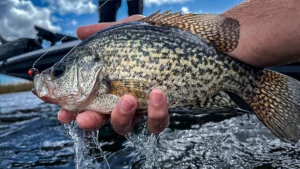
![[VIDEO] Filleting Bluegill Made Easy: Tips and Tricks](https://www.wired2fish.com/wp-content/uploads/2025/05/bluegill-cleaning-300x169.webp)
